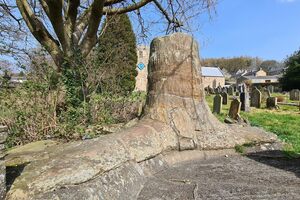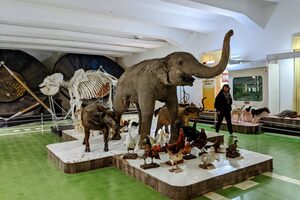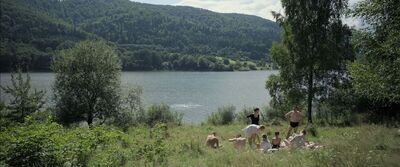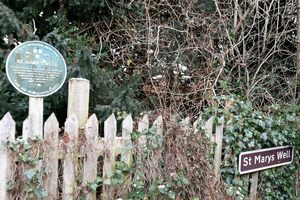Stanhope Fossil Tree in Stanhope, England

In St. Thomas’s churchyard, Stanhope, stands an unusual piece of history. What appears to be an old, dead tree trunk standing in front of a missing section of church wall just along from the war memorial is actually a large fossil.
The tree would have grown some 320 million years ago during the Carboniferous Period, long before England—let alone Stanhope—existed. At that time, the landmass that would become Britain was nearly straddling the equator and would have looked and felt much different than it does today. The land would have been covered in rainforest and surrounded by shallow tropical seas, meaning this area of the North Pennines was actually a tropical swamp. There would have been insects the size of kestrels, giant cockroaches, and alligator-sized newts. Dinosaurs were still millions of years away.
Carboniferous forests contained some of the earliest plants, including giant ferns and huge trees far distant from what we have now. The remains of the fossilized tree are a relic of those times. The trunk in St. Thomas’s churchyard is all that remains of a once grand Sigillaria, an early ancestor of the club mosses that are often used as house plants today. These distant relatives of our small house plants would once have reached heights of some 30 meters (100 feet).
The remains were found in a nearby sandstone quarry in 1915, before being moved and reconstructed at its current location in the 1960s.
Interestingly, there are records of other large fossil trees coming from the quarry at Edmundbyers Cross. In addition to the Stanhope Fossil Tree, one specimen went to the Hancock Museum in Newcastle, another went to Durham University, and another went to Muggleswick (yes, that’s a real place!).





